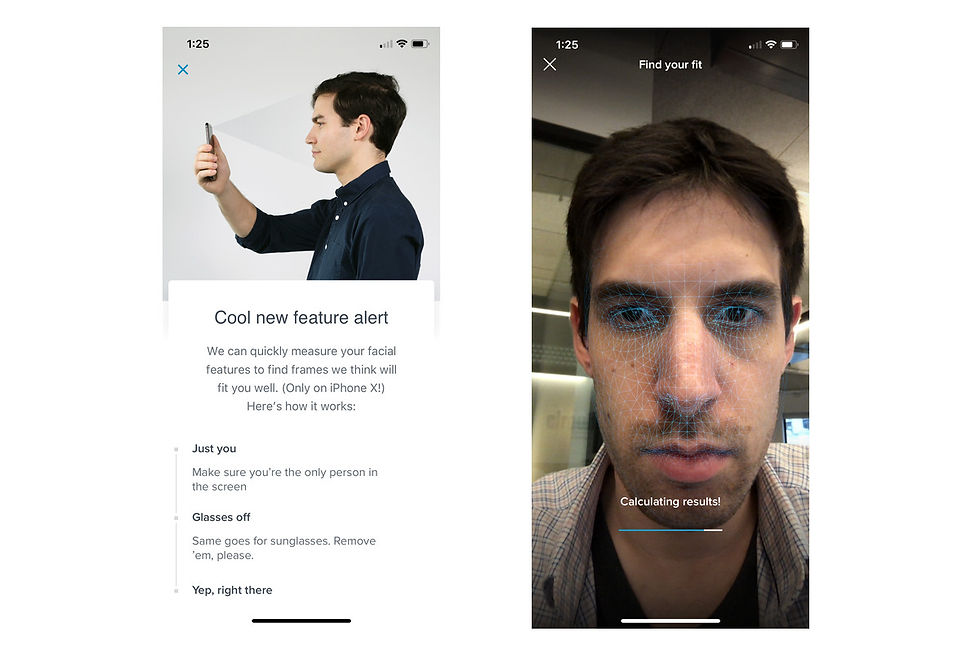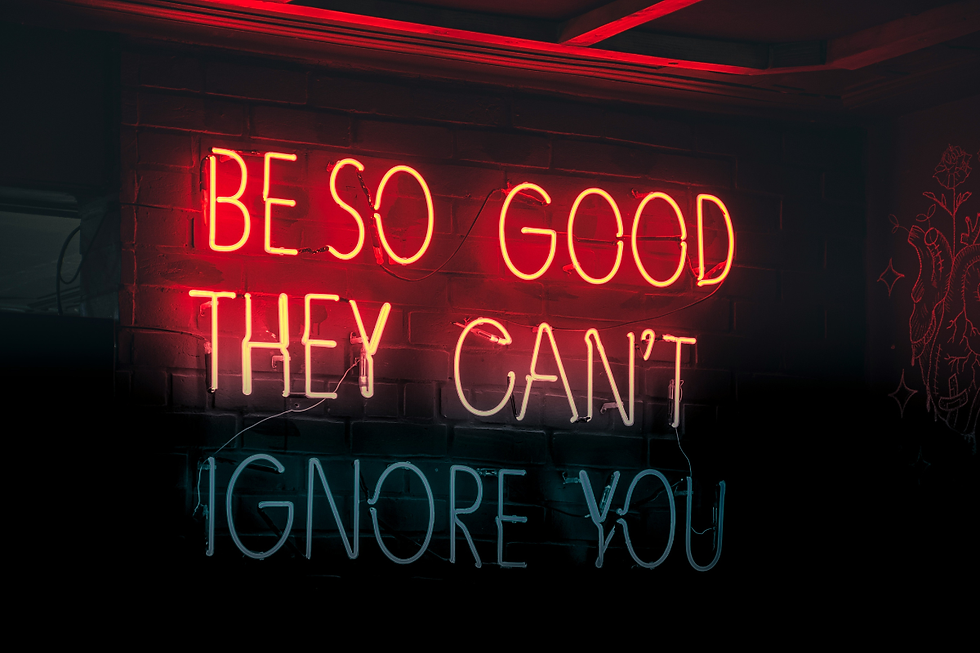DTC goes next level - Part one
- Juanita Neville-Te Rito

- Mar 14, 2019
- 7 min read

Recently someone asked me what a DTC brand was? It gets bandied about a lot and they weren’t sure they really understood. Is Kathmandu a DTC brand? Or Icebreaker? What defines this vertical integration which is part of the DTC success?
Direct-To-Consumer, or DTC in short, are products or services that are financed, designed, produced, marketed, distributed and sold by the same company. They bypass the middleman and connect directly to consumers. Amway is a classic example, so is Avon. But with the explosion and ease of ecommerce, coupled with fabulous disruptive thinking from some clever individuals, over the past 3-10 years, DTC has disrupted the retail scene and taken retail ‘next level’.
The customer (particularly in the US and UK) saw the arrival of many pure-play, digitally native brands in 2008-2011. They exposed a weakness that traditional retail had - essentially having a blank sheet of paper with no legacy footprint to worry about or legacy thinking to have to overcome.
2018 in particular has seen an incredible step-change with DTC business making it “the year of DTC.” These businesses have really transformed categories by getting to the heart of what the customer wants, intimately interrogating the pain points in traditional offerings and providing agility and innovative thinking that is unencumbered. Notwithstanding the success of tech-led services such as Airbnb and Uber, these businesses have received incredible backing and support from the business community.
Of course, many DTC brands started online to bypass the cost-heavy middlemen of brick-and-mortar retail models, and to retain more control over their marketing and distribution. Without legacy bricks and mortar they have found innovative ways to generate advocacy, word of mouth and trial.
But this cohort is clever and recognised when they should evolve to reach more customers and engage “next level”. These brands have embraced what our new retail normal requires: being available for the customer whenever, wherever or however the shopper chooses to shop with them.
It is reported that over the next five years, DTC stores could open as many as 850 new stores throughout the US alone. Many recognise that these stores are one piece of a much larger puzzle, a physical manifestation of their brand and an incredible education tool which allows shoppers to touch, feel, smell and be a part of the brand.
What I admire about these businesses is they have evolved with a test, learn, win/fail, change culture that also brings to life a recognition that customers can be anywhere, and that localisation connects heart, mind and wallet. They haven’t skimped on these investments either, recognising them as part of a long-term play.
Pop-up experiments were funnelling in information that helped guide these brands on what the store should look and feel like. Changes were made in real time allowing them to use the data to shift their original idea and change an entire idea for the concept in weeks and months ahead of a store rollout.
Some solved a shopper preference, others have uncomplicated a category. Others have smashed perceptions around a category that the key players have moated.
DTC leaders, smashing perceptions and reinventing categories
Warby Parker
Warby Parker was founded in 2010 and the company primarily sells eyewear online and since 2013 through stores in the US and Canada.

Their brand is distinctive and hipster thanks to a fanatical focus on execution and brand. By designing and manufacturing their own frames and selling directly to consumers, they’re able to charge as little as $95 per frame, a fraction of what a similarly nice pair of glasses would cost at a typical optical shop. That price also includes prescription lenses, shipping, and a donation to a not-for-profit such as VisionSpring.

On the surface, the business plan can be replicated, but the knockoffs - all they do is try to sell eyeglasses where Warby Parker are inventing this idea of what a technology-based lifestyle brand is. There is a philosophy which started Warby’s foray into physical stores, that they are seen not as profit centres as much as marketing collateral – giant advertisements for Warby Parker. There is harmony and a synergistic relationship for as much as 85% of Warby Parker retail buyers have already browsed online.

Warby Parker's "Home-Try-On Program" allows customers to choose five frames from the website, which they receive to try on at home for five days, free of charge. Customers can also upload a photo and try on frames virtually or use the face scanning technology available through the Warby app. Every touchpoint, including the stores, is an incredible exploration of the brand, highlighted with exceptional customer service and the right amount of human touch.

Warby Parker is a lifestyle brand which demonstrated that you don’t have to pay the earth to get funky, functionable and quality eyewear.
Everlane
Everlane was founded in 2010 and is building the next generation of wardrobes. They have gone from nothing to $100 million+ revenue.

Their value proposition goes something like this: In traditional retail, a designer shirt is marked up 8x by the time it reaches the customer. At Everlane, we believe customers have the right to know what their products cost to make, so we reveal our true costs, and then show you our mark-up.
Everlane believe they can all make a difference. Exceptional quality. Ethical factories. Radical transparency. They have partnered with the best, ethical factories around the world and source the finest materials and they share that story down to the true cost of every product they make. It’s a new way of doing things.

The founder originally said he would shut the business before he opened physical retail. It’s great to see he has been adaptable to change as they now start to grow their bricks-and-mortar footprint.
Casper
Casper launched in 2014, selling $1 million worth of products in the first 28 days of trading as a bed-in-a-box mattress brand.

They are unique in the construct of their beds, their marketing communication (keeping it simple and fun), and each mattress has been sold with a 100-day return policy. The company has also demonstrated they are in the business of sleep by extending their range into pillows, sheets, dog mattresses and sleep solutions.

In 2018, Casper launched the Dreamery, a “physical sleep experience” that allows customers to book 45 minutes of downtime in one of its nine private rooms. The concept store, located just behind its Manhattan flagship in Greenwich Village, provides pyjamas, essential sleep oils and meditations by the mindfulness app Headspace.

Allbirds
Direct-to-consumer brand Allbirds was built to solve a problem by former All White and Kiwi, Tim Brown.

As a professional athlete: too many logos. He set out to design the simplest pair of shoes he could, at the same time prioritising comfort and environmentally friendly materials.
Tipping the assumption on its head that innovation is always about adding something new, Allbirds saw the opportunity for doing less. The result is shoes made with environmentally friendly materials that are both comfortable and have a simple, clean design with no logos, made from materials like wool, trees and sugarcane.

Allbirds have now moved into physical stores as people want to try on shoes … a no-brainer. At the conference, Tim said out loud, "I think what we found is that it's the best marketing dollars we can spend." Whether that means a shopper sees the store and purchases the items at home or finds the website and heads to a store to check it out.
Bonobos
Bonobos effectively designs and sells men's clothing. The store has a specific emphasis on the sale of men's suits, trousers, denim, shirts, shorts, swimwear, outerwear and accessories and started exclusively online in 2007.

In 2012, Bonobos diversified to incorporate physical retail locations with the launch of their “Guideshop.”
The purpose of the Guideshop location was to provide a physical space for men to try on Bonobos prior to e-commerce transactions being placed. Within a year, the concept became an integral part of the firm's service and business model.
How it works
Though you can’t walk out with any merchandise, you can place an order, and have it shipped to you for free just like if you ordered from the Bonobos website. It’s basically a showroom for clothing.
The plus side to the Guideshop is that Bonobos can keep all its sizes, colours, fits and fabrics in stock always for you to try on. There’s only one of each item variation on the showroom floor, but because of that there’s enough room to carry every single item that Bonobos sells at once. The two-floor shop separates formal wear and casual wear, with formal taking the top floor.
Upscale service and appointment-shopping
As soon as you walk into the store, one of Bonobos’ helpful employees (called guides) will appear and explain everything. They will also help you find exactly what you’re looking for, whether it takes 30 minutes, an hour, or however long you need.
And once you are finished, the Bonobos guide completes an order on their computer. If the customer did not want to make a purchase, he was still emailed his sizes and a log of everything he tried on.
Bonobos figured that men, who typically shop for clothes twice a year, (one-sixth of the time women typically spend) would appreciate the ease of trying something on, ordering something, and then not having to carry it around with them.

In 2017, Walmart acquired Bonobos for the sum of $310 million as a business to learn from.
Away
Led by two former Warby Parker execs, they’ve done for suitcases what Casper did for mattresses, and, what Warby Parker did for eyewear: made a relatively boring necessity into an enviable statement piece at an affordable price.

With limited edition colours and collaborations with celebs like Karlie Kloss which drives waitlists, plus travel influencers splashing their latest purchases on Instagram, Away generates excitement and everyone wants to join the club.
At this point it’s almost impossible to walk through a major U.S. airport and not spot an Away carry-on gliding past you - all in muted shades of navy, forest green or sand, and steered mostly by America’s biggest travel market: millennials. At $225 for a carry-on, it is a first-time investment (though the company bills it as "first-class luggage at a coach price.") It has a lot going for it beyond the hard shell and four wheels (arguably the industry’s last innovation, which occurred some 30 years ago), like colour options for every mood, zippered mesh dividers that keep clothing from getting wrinkled, and distinct pockets for all your tablets and cables.

Away have entered bricks-and-mortar after experimenting with pop-up stores and collaborations with retailers such as Nordstrom.




Comments